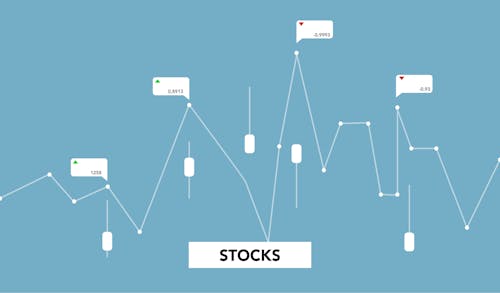Stocks Face Risk Of Further Falls

Image Source: Pexels
At the time of writing in mid-morning European trade, the German DAX was among a number of European markets to turn slightly positive on the session, recovering from a weak start. However, sentiment remained cagey with US index futures still showing losses across the board, with Nasdaq futures being off about 0.5%. Overnight saw Chinese markets fall quite noticeably, and the selling has continued in the futures market.
Thus, the slight recovery in European indices can be attributed to an oversold technical bounce, meaning we could see the selling pressure resume once again. In fact, there is a risk that things could get worse before stock prices become attractive again in these tough economic times.
So, what’s driving the markets right now?
There appear to be two major sources of concern for investors right now: Weak growth in the eurozone and China, and interest rates remaining higher for longer in the U.S.
On the latter front, we saw bond yields pressed higher in the aftermath of a strong ISM PMI report on Wednesday, which also sent the dollar sharply higher across the board and pressurized gold. Those moves have reversed somewhat, with yields dipping slightly and XAUUSD rising as a result. But it remains to be seen whether there will be any momentum behind the recovery in bond and gold prices.
With government bonds offering high yields, many investors are finding it difficult to justify holding growth stocks with stretched valuations on Wall Street. Yet, given the past strength of the stock market this year, despite surging interest rates and other concerns, investors are also not in a panic mode yet as this phase of weakness could also turn out to be temporary.
The higher-for-longer narrative got another boost as crude oil surged higher this week after Saudi extended its supply cuts through to the end of the year. There are concerns that rising oil prices could give rise to another round of inflation and keep bond yields underpinned as a result. That in turn could hurt growth stocks and weigh on tech-heavy indices like the Nasdaq and Germany’s DAX.
Stocks weighed down by soft data from Eurozone and China
Another day, another set of disappointing data from the Eurozone caused the EUR/USD to drop near 1.0700, thus losing its entire gains made so far this year. This time, German industrial production came in at -0.8% month-over-month versus -0.4% expected and -1.5% last, adding to a growing list of data misses of late for the Eurozone’s largest economy. From the Eurozone as a whole, the news was not good either as GDP was unexpectedly revised to show a modest 0.1% quarter-over-quarter ‘growth’ compared to initial estimates of 0.3%. The day before, we saw German factory orders come in at -11.7% for July, more than losing the +7.6% gain in the previous month. The outlook for Germany's industrial output doesn’t look great, given that last week the manufacturing PMI fell to 39.1 in August, marking the second-lowest reading since May 2020 and highlighting the extent of the weakness in the sector. In a clear sign of a struggling consumer, Eurozone retail sales have either fallen or stagnated in each of the past 6 months. After falling 0.3% in June, sales fell by an additional 0.2% in July, as we found out yesterday, once again disappointing expectations.
Meanwhile, China's trade data was not as bad as expected, although with exports declining 8.8% and imports falling 7.3% year over year, adding to their sharp falls from the month before, unsurprisingly this failed to offer much support to Asian markets overnight. China’s services PMI slumped to its slowest pace of growth in eight months, according to the private Caixin survey released the day before.
Against a backdrop of weakening Eurozone and Chinese data, the DAX outlook doesn’t look too great right now.
DAX: Cracks starting to appear for the German index
The German DAX index has managed to bounce off its earlier lows, but at the time of writing it was testing resistance at 15795, a previous support level. The bears will need to hold their ground here if they want to see lower levels. With the bullish trend line broken, the path of least resistance appears to be to the downside. So, watch out below. A move below support at 15700 could pave the way for the July low at 15450. And if we break that level decisively, then we could be in for a volatile period in the markets.
Given that several short-term support levels have already broken down, a bit of a bounce back from current levels would not be enough to appease the bulls. As mentioned, this morning’s bounce could easily fade given the growing macro risks. So, patience is the key word if you are bullish on the German index. A clear move back above the key 16,000 resistance level is needed to tip the balance back in the bulls’ favor, although we would prefer a healthy correction before entertaining the long side again.
More By This Author:
Nasdaq 100 Outlook: Stocks Slip As Strong ISM Data Boosts Rate Hike SpeculationEuro To US Dollar Analysis: EUR/USD Set To Lose 2023 Gains
Dollar, EUR/USD, DAX, Nasdaq Analysis – Technical Tuesday
Disclaimer: The information on this web site is not targeted at the general public of any particular country. It is not intended for distribution to residents in any country where such ...
more


